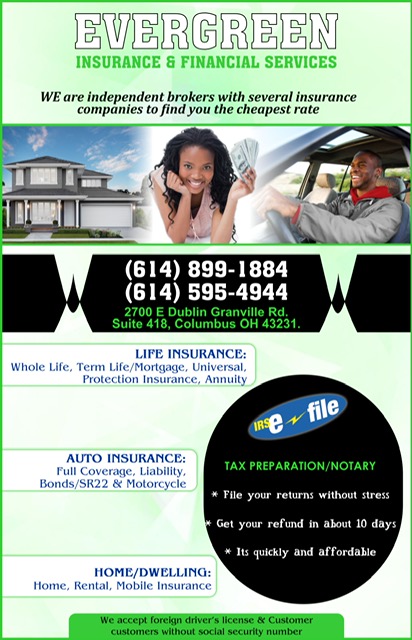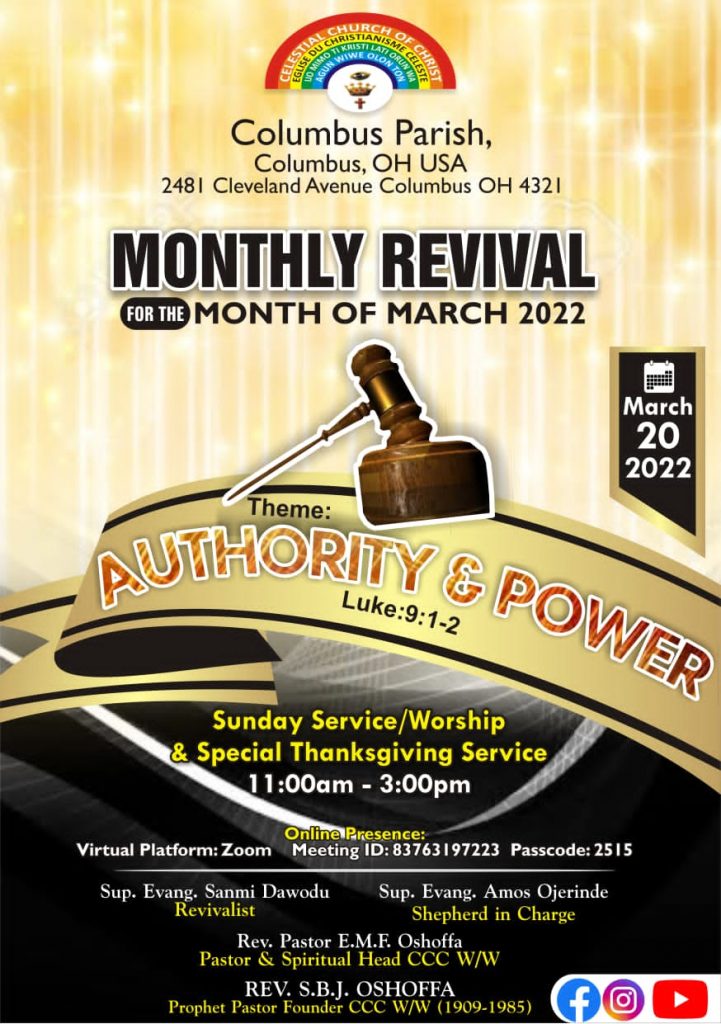2022 STATE OF THE CITY
Hello, Columbus. It is my pleasure to join you to reflect on a year that was unlike any other and move forward, as a community, with renewed strength, grit and purpose.
Many things have changed in recent years, including the pace of our world. And while this is still a time of hardship and uncertainty for many, it is also a time for opportunity and optimism.
We are mobilizing in a broad and sweeping fashion to deploy programs and resources that strengthen our community and lift up this city and its people.
We see this in our most recent operating and capital budgets, both of which exceed $1 billion and represent historic investments in our residents and our neighborhoods.
These investments are all the more remarkable when you consider that we endured the single-largest revenue loss in our city’s history at the height of the pandemic.
But through sound fiscal management, we protected meaningful programs and avoided cuts to essential services – all while creating the financial conditions that made these historic investments possible.
We have also allocated more than $250 million in federal COVID stimulus funding to support our residents and their most immediate needs during this difficult time.
From rental and utility assistance to child care, youth programming and more, every facet of daily life has been changed in one way or another – and we are helping our neighbors, businesses and nonprofits to bounce back.
The Recovery and Resiliency Advisory Committee – composed of representatives from the community, small business, nonprofit, corporate and human services sectors – identified the priorities on which we and our partners will focus while disbursing our remaining federal funds and planning future projects … taking need and urgency into account and laying out a purposeful and intentional roadmap for an inclusive and equitable recovery.
Neighbors, the state of our city is strong, but there is no entity capable of singlehandedly overcoming all of the obstacles that lay before us. Just as the times in which we live are unprecedented, so too are the solutions.
Our approach must be comprehensive as well as collaborative – and based on the fundamental belief that the bonds among us are stronger than the differences between us.
Yes, there is a time and a place for passionate debate and differing points of view. I acknowledge … and in many cases I share … the frustration and anger that follow two years of near-constant upheaval.
And, to make matters worse, there are shameless partisan forces deliberately widening the discord and distrust of a weary nation – pulling Americans even further apart.
As your mayor, I will always work on behalf of all our neighbors, no matter what your political or ideological persuasions may be.
But there are also fundamental, undeniable realities we all must acknowledge and address in order to build the city we want to be.
Doing so is necessary to form a future that is unmatched in its energy and promise – and to ensure that every Columbus resident is part of the Columbus comeback.
That is why we are incorporating equity into everything we do – and this is where the next phase of our Equity Agenda comes into play.
We call it “Opportunity Rising,” and it is the strategic, quantifiable playbook by which we will optimize our resources to tackle our city’s greatest challenges – all while strengthening our shared social fabric.
It is designed to dismantle racism so that our residents grow and prosper equitably, and it properly focuses on health … economic stability … and safe, resilient communities to help us achieve our goals.
We have been aggressively pursuing and activating many of these policies since the day I took office, but we have worked hard in recent months to assess our progress and adjust our objectives to better meet the needs of this unparalleled moment.
Let’s talk more about neighborhood safety, a top priority as we emerge from two years of record homicide numbers – a devastating trend that coincided with the start of the pandemic.
Columbus isn’t alone. The surge in violence is occurring in many other mid-sized cities across the country. The FBI reported 2019 to 2020 as the largest single-year increase in the number of homicides nationwide since it began tracking these figures in the 1960s.
And we know the majority of these crimes are being perpetrated by a small number of people representing less than one-half of one percent of our local population.
The violence is unacceptable, and it must stop, which is why we are devoting more than $660 million toward community safety in this year’s operating budget – the largest investment of its kind in city history.
This includes funding for three new Police recruit classes this year, which will graduate 170 officers. I am proud to have fought for the addition of a third police class – allowing us to bring in more officers committed to change and reform, and further grow the diversity of our safety forces.
We already see considerable progress in our most recent Police and Fire classes – which have been the most diverse in city history.
This is doubly important as we overhaul the way we train police and ensure that all our officers – both veterans and new recruits alike – receive instruction that is immersive and inclusive, and emphasizes de-escalation as a valuable and legitimate safety tactic.
All of this is part of a sustained effort to get more officers on the streets more quickly, an effort supported by our recent decisions to re-establish the police reserve units and facilitate transfers to Columbus from other law enforcement agencies across the state.
Collectively, these measures help comprise the city’s new Comprehensive Neighborhood Safety Strategy, an evolution of the plan we originally launched in November of 2017 after a spike in violence.
That strategy worked, resulting in a 30% reduction in violent crime over the following two years. But then the pandemic hit, and the world as we knew it changed dramatically.
Rather than rely on an old plan to address the current situation, we set out to create a new plan – keeping what worked, discarding what didn’t and exploring new, innovative ideas.
We are implementing our safety strategy with the help of an experienced but entirely new leadership team, including Police Chief Elaine Bryant, Public Safety Director Robert Clark and Fire Chief Jeffrey Happ. Together, we are committed to reducing violent crime and keeping our neighborhoods safe.
We have never backed away from doing what needs to be done to keep our city safe, and we have a proven track record in bringing these plans to fruition.
And while catching criminals is one aspect of our strategy to stem the violence, we are also intervening wherever possible to prevent violence from occurring in the first place.
One example is the city’s Right Response Unit, which we launched as a pilot program last spring to study its effectiveness and feasibility for long-term implementation.
The program works by enhancing 9-1-1 dispatch units to include social workers and mental health professionals who help to triage incoming calls and address certain incidents that previously would have been handled by law enforcement.
This approach applies the right response for each incident – while freeing up more of our officers to address violent crime.
And I am pleased to report that the pilot program was a resounding success.
Thanks to the addition of new perspectives and specialized experience, more than 60% of calls received by these units did not require an immediate police or fire dispatch. And, perhaps most important: The pilot program resulted in zero uses of force – another impressive outcome.
We are expanding this program to include additional staff and hours of operation, joining the slate of strategies we’ve recently activated to reduce violence across our city. These include:
The hospital-based program known as VOICE – which stands for Violence, Outreach, Intervention and Community Engagement. This program assists violent crime victims by building bridges of understanding and support that promote behavioral change. This approach has proven successful, and VOICE will be expanding to additional hospitals.
ReRoute is another program through which we are embracing supportive intervention, in this case by using data to identify likely suspects and victims of gun violence, and referring those individuals to case workers and interventionists. So far, we have referred more than 100 individuals, with 70 currently enrolled.
And we are moving ahead with the Group Violence Intervention initiative – which is commonly referred to as “GVI.” This program connects with individuals who have committed or been associated with criminal activity in the past, and encourages them to abandon such behavior in exchange for jobs, services and other constructive resources.
We have been working over the last several months to assemble and prepare the team who will put this promising new initiative into practice – and we believe that their efforts will yield the same positive results that have already been observed in other participating cities.
Still, we cannot overlook the unmistakable scourge that is gun violence, which accounted for 91% of homicides last year.
I have declared gun violence a public health crisis and called upon our Health Commissioner, Dr. Mysheika Roberts, to work with other city departments to make sure that we have a holistic approach for dealing with it.
However, we cannot ignore the effect of governors, legislatures and courts who have repeatedly tied our city’s hands, limited our ability to determine our own destiny, and stood in our way as we seek to protect those we are entrusted to serve.
We do not manufacture illegal crime guns in Columbus, and yet their proliferation into our neighborhoods is a persistent problem.
That is why we sent a letter to the U.S. Attorney General formally requesting that Columbus be included in the Firearms Trafficking Strike Force, a national initiative dedicated to disrupting illegal firearms trafficking and addressing the most significant drivers of violence.
That is why we reconvened a team consisting of City Attorney Zach Klein, as well as local, state and federal law enforcement, to pursue the very small number of bad actors committing the overwhelming majority of crimes in our city.
And that is why we formed the Columbus Alliance Against Illegal Guns – a coalition of residents, community and faith leaders, and medical professionals – to demand common-sense gun reform from the Statehouse and Congress.
We will also work with this group to explore best practices in other communities and craft new strategies to reduce gun violence in our neighborhoods.
And although reasonable gun reform is what this crisis ultimately requires, we will not wait for others to act.
We will continue to pursue other reforms that advance community safety.
Many of these reforms aim to restore trust and the vital flow of information between our officers and the public, and they do so by enhancing accountability and transparency across the Division of Police.
The new collective bargaining contract that we secured with the Fraternal Order of Police expedited much of this work, and it established a solid foothold for 21st-century community policing in the City of Columbus.
From affirming independent oversight through the first-ever Civilian Police Review Board and Inspector General – who we named just a few weeks ago – to rewarding high-performing officers and attracting more diverse candidates to the division, these historic changes show what is possible when we work together to get things done.
In another first for Columbus, City Attorney Klein and I invited the U.S. Department of Justice to review policing in our community. The DOJ accepted and assigned its Community Oriented Policing Services Office to perform the review. This unit has worked for decades to help cities expand their community policing practices, and we look forward to their findings.
We have achieved a lot in a short period of time, but our work is far from over.
We need every resident, in every neighborhood, to share what they know with law enforcement to help bring investigations to a close and to discourage friends and loved ones from turning toward violence.
Virtually all of the initiatives I have touched on benefit from consistent collaboration and communication, especially with our outstanding community partners.
Columbus is a special place, and it is worth fighting for. We band together to solve problems, and we are fully committed to fostering the safest possible city.
Violence elimination and crisis mitigation: This is what we mean by Opportunity Rising.
But we cannot, and we should not, expect law enforcement to resolve all of the underlying conditions that lead to crime and violence in our communities.
We must also focus on the building blocks for longer, healthier and more rewarding lives – things like infant vitality, child care and education.
Let’s start with CelebrateOne, our regional initiative to ensure that every baby born in Columbus and Franklin County celebrates their first birthday.
This group has made substantial progress since their work began in 2014, having lowered the infant mortality rate by 20% in Franklin County and nearly 20% in CelebrateOne priority neighborhoods.
But there are still racial disparities that we must conquer.
When compared with white babies and when looking at our priority neighborhoods, Black babies are more than two times more likely to die before their first birthday. County-wide, Black babies are nearly three times more likely to die before this critical time.
We are laser-focused on closing these gaps by accelerating health and racial equity, expanding collective action and more forcefully targeting social determinants of health.
One of the key factors to healthy birth outcomes is stable housing. Without it, moms-to-be are more likely to deliver prematurely, and the babies are more likely to have health issues.
I am calling on Columbus landlords to help us close this gap by renting apartments to need-based pregnant women.
CelebrateOne will cover the cost – but we need your help providing healthy and safe environments for mothers and their babies.
Our work extends to early-learning programming, as well, because we know that access to education has the extraordinary ability to impact upward mobility.
I am proud to stand with and support Future Ready Columbus, a public-private partnership committed to ensuring that 100% of Franklin County’s children are kindergarten-ready by the year 2030.
The importance of early childhood education cannot be overstated. Ninety percent of a child’s brain develops in the first five years of life. Being “kindergarten ready” means being ready for life itself – and we owe it to all our children to equip them with the tools they need to succeed.
Future Ready released their county-wide strategic plan late last year. It is already being implemented and mirrors CelebrateOne’s model by targeting initial attention on communities experiencing the types of adversity that impede kindergarten readiness.
One facility that will be key to Future Ready’s success is the Hilltop Early Learning Center, a state-of-the-art, $22 million investment from the city that will offer an array of wraparound services for children and families in a neighborhood that hasn’t always shared in our city’s success.
We have enlisted Columbus Early Learning Centers to operate this new facility, and I am excited for you all to see it when its doors open to the community later this year.
All of this will enable even more of our students to get a good education and to acquire the knowledge they need to thrive, from pre-school through high school and beyond.
The Columbus Promise represents the culmination of many of these efforts, which is why I was delighted to join City Council President Hardin and our partners in announcing that students who graduate from Columbus City Schools can attend Columbus State Community College tuition-free – setting them on a path toward continued professional success.
Infant vitality, kindergarten readiness and workforce readiness: This is what we mean by Opportunity Rising.
At the same time, we know that building an accessible and affordable Columbus is just as crucial to our continued growth and prosperity.
However, housing inventories are at all-time lows, which are driving home prices toward all-time highs. We need more homes at every price point – and nowhere is this pressure felt more acutely than among those who need access to housing they can afford right now.
This predicament, ironically enough, stems from one of our region’s greatest strengths: our exponential population growth. Columbus grew more than every other urban area in Ohio and was the only city in the Midwest to gain at least 100,000 residents over the last decade.
This level of growth would not be possible without a booming business climate. In fact, we set a new record for job creation in 2021 – a milestone made tangible by all the recent additions to our region’s business community.
Last year, in partnership with The Ohio State University, we announced the Innovation District: 270 acres on Ohio State’s Columbus campus for research, collaboration and economic partnership among academia, health care, government and Fortune 500 companies. This $3-4 billion pursuit is expected to create more than 12,000 jobs over 10 years – and generate $1 billion in annual payroll.
And more businesses arrive and expand nearly every day, through new investments from companies like Intel, Hyperion, Google and Amazon.
Intel, as you know, is the largest-single private investment in Ohio history and will radically transform our regional economy for generations to come while Hyperion – a leading hydrogen fuel cell producer – is the largest manufacturing investment to occur within the City of Columbus in a decade.
Both companies are bringing to our region a significant number of good-paying jobs in enterprising industries, further cementing our standing as the “Silicon Heartland” for domestic high-tech manufacturing.
These developments also signify the importance of coordinated regional action. Intel wouldn’t have selected Central Ohio as the location for their expanded operations had the City of Columbus not agreed to provide water and sewer services for the site.
New Albany had the land, and we had the utilities – and all of us, working in close partnership with the state, successfully advanced the best interests of the region.
There is opportunity … and collaboration … in Central Ohio. We have the jobs, and we must do everything within our power to have the homes as well. If you work in the region, you should be able to afford to live in the region.
It comes down to this: If you’re making $50,000 a year, you shouldn’t be paying more than $1,200 a month to live in the neighborhood of your choice.
If we want to attract, and retain, the very best jobs and the very best talent, we have to cultivate a community that is attainable for all.
Here is what the City of Columbus has done so far…
In 2019, Columbus voters overwhelmingly approved a $50 million affordable housing bond package, and we immediately started disbursing those funds to support projects that expand the affordable housing stock in our community.
In its totality, these funds will have leveraged more than $300 million in public- and private-sector investments to create 1,300 new affordable housing units over four years – speeding up the pace of progress in our community.
Take, for instance, the Scholar House in the King-Lincoln District – a project near and dear to my heart. As many of you may know, my parents fostered 47 children while I was growing up.
I know firsthand the struggles young people face when they exit the system when they turn 18.
Fortunately, there are now resources like The Scholar House that offer safe affordable housing for former foster youth who are in the process of earning a college degree.
And, last spring, we announced Erin Prosser as the city’s new assistant director of housing strategies at Jenkins Street Lofts in Merion Village, a public-private partnership serving individuals earning between $17,000 to $47,000 per year.
Affordable housing must be available in every neighborhood – including Downtown, which we sometimes refer to as “everyone’s neighborhood.” Thanks to the C-D-D-C, we just broke ground on Topiary Park Crossing, which will bring 98 units online for individuals making between $35,000 and $58,000 per year.
On a parallel track, city staff are working to update the residential tax abatement policy that will further incentivize the creation of additional affordable units.
Solving this issue, however, remains a regional undertaking. We need more housing units, of every type, just to keep up with current growth. Estimates place that number as high as 21,000 new units per year.
Without the help of neighboring communities, we will neither meet demand nor adequately prepare for what is forecasted to remain a rapidly growing regional population.
That is why I am calling on our public- and private-sector partners across Central Ohio to invest a total of $1 billion in housing initiatives and to double the number of units – market rate, workforce and subsidized – coming to market every year for the next 15 years.
To kick off this effort, I am committed to placing another bond package before Columbus voters this November, with at least $150 million going toward the expansion of affordable housing in our city.
We know what we can achieve when we devote $50 million to this cause. Imagine what we will accomplish with $150 million … or even $1 billion as a region…
Housing stability: This is what we mean by Opportunity Rising.
While jobs in our region are booming, women – especially women of color – carry a uniquely challenging burden in the labor market: access to affordable and reliable child care.
Estimates suggest that as many as 1.8 million women nationwide made the difficult decision to leave the workforce to care for their children during the pandemic – a reality we are confronting head on thanks to the advocacy of the Columbus Women’s Commission, led by First Lady Shannon Ginther.
We allocated $3.5 million from the American Rescue Plan to provide child care scholarships for working families and to address labor shortages by offering signing bonuses for new teachers.
In addition, the Women’s Commission continues to expand the Columbus Commitment, bringing area employers to the forefront of change by addressing gender pay equity in the workplace. So far, 286 businesses have signed the pledge and, starting this month, we will be pushing to get 100 new adopters within 100 days.
And the Women’s Commission has been a lead partner in standing up Columbus’ first Financial Empowerment Center, which will launch this spring and provide free financial counseling for residents.
Our efforts to expand equity in the labor market extend beyond gender. They also include minority communities through the work of our Office of Diversity and Inclusion.
I am happy to report that supplier diversity in city contracts has increased 36% since I became your mayor. Diversity of the city’s workforce is closer to reflecting the diversity of our community, as well. And I am proud to say that I have assembled the most diverse cabinet and staff in city history. But in both areas there is more work to do – and we are committed to doing it.
Jobs and an inclusive economy: This is what we mean by Opportunity Rising.
But any consideration of growth in our community must also factor in the need for a sustainable climate. And while the effects of a changing climate can often feel far-removed from Central Ohio, I assure you that the impacts are real.
Not only is climate change felt through higher temperatures, record rainfall totals and more severe weather, it is felt in higher energy costs, poor health outcomes and a lower overall quality of life. What’s more, those impacted the most by a changing climate can afford it the least.
I am proud that Columbus is taking monumental leaps toward becoming a more sustainable community.
In November of 2020, voters overwhelmingly approved Clean Energy Columbus – the city’s Ohio-based clean-energy program. And I am happy to say it’s already in place.
A key component of this program’s continued success is the Columbus Solar Park, a partnership between the city’s Division of Power, AEP, BQ Energy and the Solid Waste Authority of Central Ohio to build solar arrays on the site that once served as Franklin County’s sanitary landfill.
Power from the solar park will connect to the city’s grid and benefit residents and businesses who have opted to enroll in Clean Energy Columbus.
The solar park will not only provide Columbus residents with cleaner energy and healthier air, but it will also restore abandoned, polluted lands back to productive use – all while supporting over 200 jobs to build the new complex.
This is the very definition of sustainability – and a core component of our city’s commitment to reduce greenhouse gas emissions by 45% by 2030 and achieve full carbon neutrality by 2050.
The details of this ambitious endeavor are outlined in the city’s first-ever Climate Action Plan, which we released late last year.
This plan is the product of extensive community outreach – created with residents, businesses and environmental advocates on how we will equitably reduce our carbon footprint and allow for our most vulnerable neighbors to better withstand the effects of a changing climate.
Several of the plan’s recommendations are already underway, with $10 million this year going to support the creation of clean energy jobs, the expansion of energy efficiency initiatives, and the formation of a new fund for solar projects in the nonprofit and affordable housing sectors.
This work aligns perfectly with Rumpke’s recent announcement of a new $50 million facility on Joyce Avenue that will significantly increase their capacity for processing and sorting recyclables in our community.
This investment brings with it living-wage jobs, valuable training opportunities for new and existing employees, and improvements to worker safety and overall efficiency.
Even more exciting, this private development will complement the city’s planned investments in American Addition and help to leverage additional private engagement in this historically Black neighborhood.
It was once on the verge of collapse, lacking the infrastructure and amenities that most of us take for granted. Then, in 2010, the city partnered with residents in this area to build new roads, sidewalks and streetlights. But, as city budgets tightened, the final phase of improvements stalled.
That is why we’ve set aside money in the capital budget to finish what we started. And we are working with the neighborhood to make American Addition the first net-zero historically Black neighborhood in the country.
What will this look like? In partnership with residents, businesses and nonprofits, we will create a neighborhood premised on clean energy, affordability and equity. We will provide energy upgrades for historic homes and build new affordable and sustainable housing options. We’ll invest in green energy to lower energy costs for residents … improve connectivity to close the digital divide … and invest in infrastructure to improve green spaces and enhance overall quality of life.
Clean energy, green jobs and more sustainable, resilient and equitable neighborhoods: This is what we mean by Opportunity Rising.
We are also committed to installing core infrastructure across the city that supports a safe, reliable and advanced transportation system – regardless of whether you walk, drive or take public transit.
It is a tremendous task, but it’s absolutely essential – and it will benefit from our success on other fronts.
Last year, the city joined forces with our partners at Franklin County, COTA and the Mid-Ohio Regional Planning Commission to launch LinkUS, Central Ohio’s collaborative venture for improving ease and equity of travel along major growth corridors.
Through its work, the LinkUS team is devising concrete plans to help our region reduce traffic congestion and ensure better access to jobs, housing and care – exemplifying the virtues of environmental sustainability and inclusive economic vitality.
Plans are also in the works for the Livingston Avenue corridor, where we will be installing improved, resilient infrastructure throughout the Near East Side, including Driving Park.
Our partners at Nationwide Children’s Hospital have been instrumental in spurring growth along Livingston, and we will build upon their progress by extending essential corridor improvements – like sidewalks, turn lanes and lighting – further east.
I want to thank our neighbors in Driving Park who raised this issue with me last year and who will help to decide what the community needs most.
We are also setting our sights on revitalizing the Eastland area, where we will be developing a new community-driven plan like the ones we created for Linden and the Hilltop – which have subsequently received more than $150 million in public and private investments to-date.
Our focus on the Hilltop and Linden and, eventually, Eastland, is in addition to – and not at the expense of – our focus on other Columbus neighborhoods.
But we know how successful these community plans can be – and we look forward to working with our neighbors and businesses in Eastland to make a similar impact.
There are countless connections among all of these endeavors, but few better capture their breadth and depth than our ongoing effort to update the city’s zoning code.
That is because the zoning code spells out precisely where and how neighborhoods will develop … the type of construction and redevelopment that is permitted within specific areas … and what we expect, and hope, will take root across our city’s ever-changing landscape.
It is important to note that Columbus hasn’t completed a significant overhaul of its zoning code in nearly 70 years. And while this is long overdue, we will not rush the process.
We are committed to a thorough and inclusive assessment of where we have been, where we stand now and where we are going.
Doing so advances our city and its people, enhances the quality of our social and physical environments, and establishes the bedrock for a more resilient and equitable Columbus.
In some cases, the fruits of our labor remain aspirational – they’re still on the drawing board. In others, they’re a work in progress. But there is perhaps no greater illustration of our community’s impact … and our potential … than when we reflect on all that Columbus Public Health has accomplished throughout this pandemic.
Our staff and medical professionals are steadfast in their determination to help this community persevere through what has been an unnerving and unpredictable virus.
Last year alone, they administered nearly a quarter-million doses of the COVID-19 vaccine. A truly mind-blowing statistic considering all that they already do for us.
They are so very often the first ones in and the last ones out – and we would be wise to emulate their courageous example when gearing up for the pressing work ahead.
Neighborhood building … health and well-being: This is what we mean by Opportunity Rising.
Neighbors, while our COVID numbers are lower today, the virus will remain with us, in different forms and varying degrees of severity.
For just how long, we don’t yet know. Also unknown is the lingering economic impact of changes in the workplace.
To that end, remote-work laws in the Ohio General Assembly are hampering our ability to collect the income-tax revenue we need – and have historically relied on – to provide essential services for our residents and businesses.
Our cities are the lifeblood of the state’s economy. They accounted for all of the state’s job gains since 2020. We want to continue to lead and support Ohio’s upward trajectory. But in order for us to do that, we need predictable, reliable revenue streams to do the work that is expected of us.
We will continue to work with the Statehouse to enact the changes we need for our city and other cities across Ohio.
Meanwhile, secretive groups from outside our city remain determined to manipulate the ballot initiative process to funnel taxpayer dollars toward misleading and self-serving interests.
Last fall, a group known as ProEnergy attempted to do this very thing when they sought to divert $87 million from the city’s general fund – all under the false pretenses of supporting “clean energy” initiatives. Fortunately, Columbus residents saw this as the sham that it was and voted it down by historic margins.
But we must close the loopholes that ever allowed this to happen and prevent other self-dealing entities from doing the same in the future.
The city’s Charter Review Commission is taking the lead on this and other important matters, and we expect to have a solution ready for the ballot this November.
Our challenges are great, but I maintain that our opportunities are greater still.
We’re pressing forward, together, having found new and powerful ways to collaborate, united in a shared effort to eliminate the injustices and inequities that have held back far too many for far too long.
To succeed, our field of vision must be as expansive as our commitment and as clear as our solutions – and Opportunity Rising is how we will get there.
We are breaking down every barrier, opening every door, and building the city we want … and deserve … by amplifying equity, resiliency and excellence.
As the saying goes: “We are the ones we have been waiting for.”
I echo the spirit of this notion, but with a slight adjustment: A community that bands together rises together.
And by holding fast to that which unites and uplifts all our neighbors, I know that we will, as one city, rise solidly and steadily together.
God bless you, and may God bless the great City of Columbus.




































Leave a Reply
You must be logged in to post a comment.